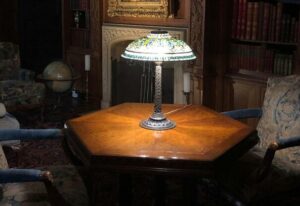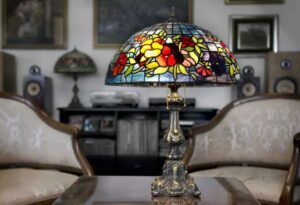In the world of interior design and lighting, the debate between antique and modern lamps has always been a topic of interest. Price is often one of the factors that influence the decision-making process when choosing the perfect lamp for a space.
Many wonders: Are antique lamps more expensive than modern lamps?
The answer to this question is not as simple as one might assume.
While it’s true that some antique lamps can fetch a high price due to their rarity, historical significance, and craftsmanship, not all antique lamps are necessarily more expensive than their modern counterparts.
Similarly, there are modern lamps designed by renowned artists or made with high-quality materials that come with a hefty price tag.
In this article, we will delve into the factors that determine the cost of both antique and modern lamps, compare their prices, and provide valuable insights to help you make an informed decision when choosing the perfect lamp for your home or office.
What are Antique Lamps and Modern Lamps?
An antique lamp is a lamp that is over 100 years old. These lamps are typically considered valuable because they are rare, have historical significance, and are often beautifully designed.
Many antique lamps were created during a time when lamp-making was considered an art form, and they reflect the craftsmanship and creativity of their time.
Modern lamps, on the other hand, are lamps that are currently being produced. They can range from simple and functional to complex and unique.
Modern lamps are typically mass-produced, which means they are more affordable than antique lamps. However, modern lamps can also be quite expensive, depending on their materials and design.
Is an Antique Lamp More Expensive Than a Modern Lamp?
The answer to this question is not straightforward. The price of a lamp is determined by many factors, such as the rarity, age, design, manufacturer, and condition of the lamp, regardless of whether it is antique or modern.
However, in general, antique lamps tend to be more expensive than modern lamps due to their rarity and historical value.
Differences between Antique Lamps and Modern Lamps
One of the main differences between antique lamps and modern lamps is their design.
Antique lamps often feature intricate details and unique designs that are not commonly seen in modern lamps. They are also typically made with high-quality, durable materials, such as brass and bronze, which can contribute to their value.
Modern lamps, on the other hand, are often made with more affordable materials, such as plastic and acrylic. While some modern lamps are designed to look like antique lamps, they lack the historical value and uniqueness of authentic antique lamps.
Factors That Affect the Cost of Antique Lamps
Several factors contribute to the cost of antique lamps, including their rarity, age, design, manufacturer, and condition.
Rarity
Antique lamps that are rare or have a unique history can command a higher price.
For example, antique Tiffany lamps are known for their exquisite stained glass shades and are highly sought after by collectors.
Similarly, lamps that are made by famous manufacturers, such as Handel or Pairpoint, are more valuable than lamps made by lesser-known companies.
Age
The age of an antique lamp is another important factor in its value. Lamps that are over 100 years old are generally considered antique and more valuable than lamps that are only a few decades old.
However, the age of the lamp alone is not enough to determine its value, as other factors, such as condition and rarity, also play a role.
Design
The design of an antique lamp is another critical factor in its value. Lamps that are beautifully designed with intricate details and unique features are more valuable than lamps that have a simple design.
For example, lamps with a stained glass shade or elaborate metalwork are often more valuable than lamps with a plain shade or simple design.
Manufacturer
The manufacturer of an antique lamp can also impact its value. Lamps made by famous manufacturers such as Tiffany, Handel, and Pairpoint are generally more valuable than lamps made by lesser-known companies.
Condition
The condition of an antique lamp is an essential factor in its value. Lamps that are in excellent condition, with no or minimal damage, are more valuable than lamps that have significant damage or wear and tear.
For example, a lamp with a cracked or chipped glass shade will be worth less than a lamp with a perfect shade.
Where to Find Antique Lamps?
There are several places where you can find antique lamps, including antique stores, auctions, and online marketplaces.
Antique Stores
Antique stores often specialize in selling vintage and antique furniture, including lamps. These stores are great places to find antique lamps in good condition, as the owners will often restore the lamps before selling them.
Auctions
Auctions are another great place to find antique lamps. Many antique lamps are sold at auction, and this is a great opportunity to find rare and unique pieces.
Online Marketplaces
Online marketplaces like eBay, Etsy, and Chairish are also great places to find antique lamps. These marketplaces have a wide selection of antique lamps from different eras, manufacturers, and designs. However, when shopping online, it’s essential to do your research and only buy from reputable sellers with good ratings and reviews.
Pricing of Antique Lamps
The pricing of antique lamps can vary widely, depending on the factors we discussed earlier. On average, antique lamps can range from a few hundred dollars to tens of thousands of dollars.
For example, a rare Tiffany lamp can sell for over a million dollars, while a lesser-known antique lamp in good condition can sell for a few hundred dollars.
Examples of High-End Antique Lamps
Here are some examples of high-end antique lamps and their prices:
– Tiffany Studios Wisteria Lamp – Sold for $1,565,000 at Sotheby’s in 2019
– Tiffany Studios Dragonfly Lamp – Sold for $678,500 at Christie’s in 2014
– Handel Poppy Lamp – Sold for $27,500 at Rago in 2020
– Pairpoint Puffy Rose Lamp – Sold for $23,000 at Rago in 2018
Factors That Can Affect the Pricing of Antique Lamps
As we mentioned earlier, several factors can affect the pricing of antique lamps. Some of these factors include:
– Rarity: Rare lamps are often more expensive than more common lamps.
– Condition: Lamps in excellent condition are worth more than lamps with damage or wear and tear.
– Historical significance: Lamps with a unique history or cultural significance can command a higher price.
– Design: Lamps with intricate designs or unique features are often more valuable than lamps with a simple design.
– Manufacturer: Lamps made by famous manufacturers are usually more valuable than lamps made by lesser-known companies.
Pricing of Modern Lamps
Modern lamps are generally more affordable than antique lamps. On average, modern lamps can cost anywhere from under $50 to a few thousand dollars, depending on the brand, materials, and design.
Examples of High-End Modern Lamps
Here are some examples of high-end modern lamps and their prices:
– Flos Arco Lamp – Cost around $3,000
– Louis Poulsen Artic Pendant Lamp – Cost around $700
– Kartell Bourgie Lamp – Cost around $400
Factors That Can Affect the Pricing of Modern Lamps
Like antique lamps, several factors can affect the pricing of modern lamps, such as:
– Materials: Lamps made with high-quality, durable materials, such as metal or glass, are more expensive than lamps made with cheaper materials like plastic.
– Design: Lamps with a unique or luxurious design are usually more expensive than lamps with a simple design.
– Brand: Lamps from well-known brands are generally more expensive than lamps from lesser-known brands.
Benefits of Investing in Antique Lamps
Investing in antique lamps can have several benefits, including:
– Historical and cultural significance: Antique lamps often have a unique history and cultural significance that can enhance their value and make them more desirable.
– Aesthetics and uniqueness: Antique lamps offer a unique aesthetic that cannot be found in modern lamps. They may also be one-of-a-kind or have unique features that make them stand out.
– Potential for appreciation in value: Antique lamps, especially those that are rare, can appreciate in value over time. This makes them a good investment for collectors.
Conclusion
In summary, antique lamps are generally more expensive than modern lamps due to their rarity and historical value. Several factors can impact the pricing of antique lamps, including rarity, age, design, manufacturer, and condition.
However, modern lamps can also be quite expensive, depending on their materials and design. Investing in antique lamps can offer several benefits, including historical and cultural significance, aesthetics and uniqueness, and potential for appreciation in value.
Whether you’re looking for a functional lamp or a unique piece for your home, antique and modern lamps are both excellent choices.



